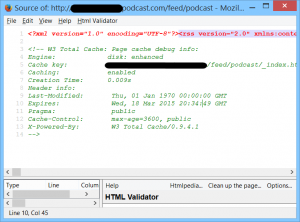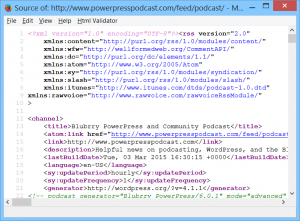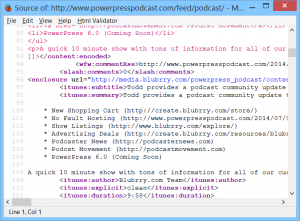How to Get Rss Feed From Blubrry
There are a number of reasons why RSS feeds and the content they syndicate might have issues from time to time. Usually, the solution is simple, such as turning off a rogue plugin. Other times solutions involve changing super-aggressive web server rules that were disabled by overzealous server administrators. The following page documents the most common of these issues and some typical examples.
Content formatting issues in podcast directories such as Apple Podcasts
When content is not formatted correctly in directories such as Apple Podcasts, it is usually an indication that your feed has been manipulated in some way. Follow our Diagnosing Player and/or Feed Issues page to diagnose the problem.
Directories are taking longer than normal to update
If your listing at Apple Podcasts, Spotify, or any other directory is taking a long time to update (more than 48 hours), this is usually an indication of one of the following:
- XML in the RSS is formatted incorrectly (test with a feed validator service like our Cast Feed Validator)
- Server is blocking Apple Podcasts (e.g. blocking HTTP/1.1 HEAD and GET requests must be supported)
- HTML style comments are found at the bottom of the XML of the feed (this can be an intermittent issue, some weeks it's not a problem, some weeks it is)
Click here for suggestions on troubleshooting this kind of issue.
Podcast feed is not accepted because it does not support byte serving, your podcast artwork image is not 1400×1400 pixels or does not support HEAD requests
When submitting your podcast feed to Apple Podcasts, if you see the above error, you will need to check the following:
- RSS feed URL is hosted on a server that supports byte range requests (partial requests) and correctly accepts HTTP HEAD requests
- Artwork image URL is hosted on a server that supports byte range requests (partial requests) and correctly accepts HTTP HEAD requests
- Episode media files are hosted on a server that supports byte range requests (partial requests) and correctly accepts HTTP HEAD requests
- Artwork image is truly 1400×1400 square image in RGB color space saved as a png or jpg
Contact your server administrator or hosting provider to check for byte range request support and HEAD request support. We recommend testing your image with a different graphics viewer other than the one that you used to create the graphics to check for the true size. RGB color space is for images that are viewed on screens, they are not for print. If you can zoom into the image and the picture is grainy, it is more than likely a CMYK formatted image, which is intended for printing and is not valid.
Feed validation issues
First, make sure you are observing a feed error, as opposed to a recommendation. FeedValidator.org hasn't been updated in many years and is not aware of many of the new tags and attributes for podcasting added by Apple or RawVoice. You should use Cast Feed Validator instead, as it is updated by the Blubrry team regularly.
Example: Manipulated feed content with HTML comments

This example shows the RSS XML source (content) all on one line. New lines are stripped from the values, which would cause all of your text to appear as one line when viewed in podcast directories. It also has HTML style comments at the very bottom of the feed, which is known to cause random issues with the iTunes feed-parsing system.
Example: Feed with blank first line
PICTURE COMING SOON
XML rules require that the very first line of an XML document (which a podcast feed is an XML document) start with the <?xml … decoration. Though we are unaware of any podcast directories that have a problem with this, feed validation services will treat your podcast feed as invalid if there is a blank line at the very top of the feed source.
This particular issue is typically caused by either a theme or plugin outputting a blank line before WordPress outputs actual website headers. Follow our Diagnosing Player/Feed Issues page to diagnose the problem. If you are using a default theme and have no plugins enabled and you still observe a new line at the very top, you could have a new line in your wp-config.php or in one of the other core WordPress files. Check your wp-config.php first, then proceed to install a fresh copy of WordPress to try to solve the problem.
Example of a valid RSS feed


This is an example of a well formed RSS feed. Note that the very first line includes the <?xml decoration, followed with new lines for content. Values such as the <itunes:summary> pictured above that have multi-lines when viewed in the source guarantee that those lines are displayed by the application or directory that parses the XML.
conleydayfulgaid1962.blogspot.com
Source: https://blubrry.com/support/powerpress-documentation/typical-feed-issues-detail/
0 Response to "How to Get Rss Feed From Blubrry"
إرسال تعليق